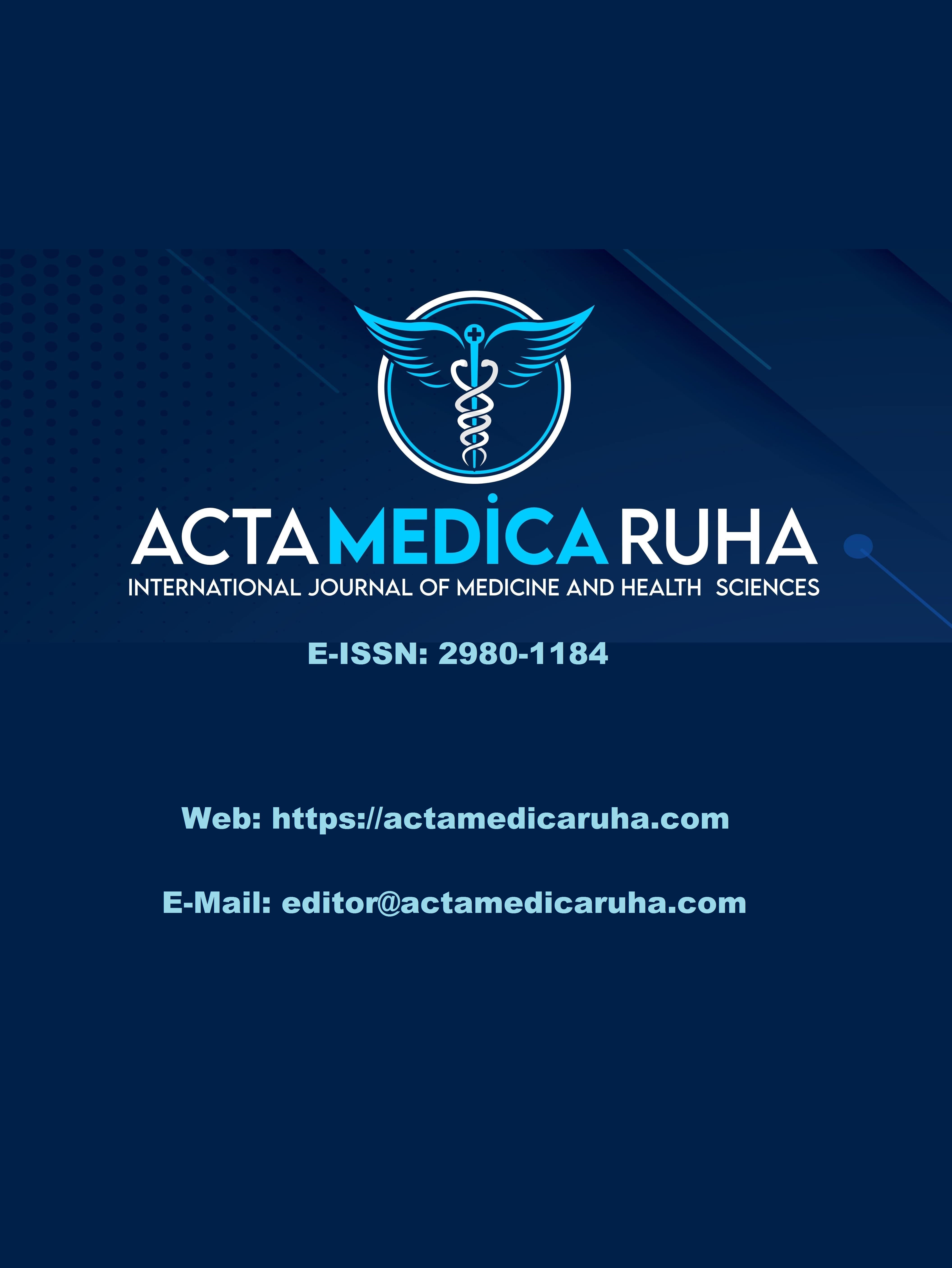Diabetic Foot Infections
ERRATUM: Research Article
DOI:
https://doi.org/10.5281/zenodo.8317318Keywords:
Diabetes Mellitus, Diabetic Foot Infections, Doppler Ultrasonography, Peripheral Artery DiseaseAbstract
Introduction: Diabetes mellitus (DM) has become an important international public health problem considering that its prevalence has increased rapidly in Turkey and all over the world in recent years. A serious and common chronic complication of DM is diabetic foot.
Objective: We aimed to evaluate diabetic patients and to determine the prognosis and other effective factors associated with diabetic foot ulcers in patients.
Method: In this study, 64 patients diagnosed with diabetic foot infection between 2012 and 2020 were included. Demographic, clinical and laboratory findings, bilateral lower extremity arterial and venous Doppler ultrasonography findings, underlying diseases, wound width, antibiotics used in treatment were obtained retrospectively.
Results: A total of 64 patients, 21 females (33%) and 43 males (67%), were included in the study. Of these patients, 33 (52%) were using oral anti-diabetics and 19 (30%) were using insulin. 53% of the patients had a diagnosis of peripheral artery disease and (62.5%) coronary artery disease. 3 (4.7%) had chronic kidney disease and 2 (3%) were receiving haemodialysis treatment. Hypertension was present in 30 (47%) of the patients. 27 (42%) patients had a wound width ≥5cm. Right foot was more commonly affected (n=40, 62.5%). In 10 (16%) patients, the microorganisms grown in deep tissue culture were Klebsiella pneumoniae in 3 patients, Klebsiella oxytoca in 1 patient, Methicillin-resistant Staphylococcus aureus in 2 patients, Morganella morganii in 2 patients, Serratia marcescens in 2 patients.
Conclusion: With proper evaluation of diabetic foot ulcers, infection-related morbidity, hospitalisation, length of hospital stay and major limb amputation rates can be reduced.
References
El Sayed NA, Aleppo G, Aroda VR, et al. On behalf of the American Diabetes Association. 6. Glycemic Targets: Standards of Care in Diabetes-2023. Diabetes Care. 2023;46(Suppl 1):S97-S110. doi:10.2337/dc23-S006.
Saeedi P, Petersohn I, Salpea P, et al. IDF, Diabetes Atlas Committee. Global and regional diabetes prevalence estimates for 2019 and projections for 2030 and 2045: Results from the international diabetes federation diabetes atlas, 9th edition. Diabetes Res Clin Pract. 2019;157:107843.
Sun H, Saeedi P, Karuranga S,et al. IDF Diabetes Atlas: Global, regional and country-level diabetes prevalence estimates for 2021 and projections for 2045. Diabetes Res Clin Pract. 2022;183:109119. doi:10.1016/j.diabres.2021.109119
Ülgü MM, Gülkesen KH, Akünal A et al. Characteristics of diabetes mellitus patients in Turkey: An analysis of national electronic health records. Turk J Med Sci. 2023;53(1):316-322. doi:10.55730/1300-0144.5587
Armstrong DG, Boulton AJM, Bus SA. Diabetic Foot Ulcers and Their Recurrence. N Engl J Med. 2017;376(24):2367-2375. doi:10.1056/NEJMra1615439
Monteiro-Soares M, Boyko EJ, Ribeiro J, Ribeiro I, Dinis-Ribeiro M. Predictive factors for diabetic footB lceration: a systematic review. Diabetes Metab Res Rev. 2012;28(7):574-600. doi:10.1002/dmrr.2319
Van Netten JJ, Bus SA, Apelqvist J et al. International Working Group on the Diabetic Foot. Definitions and
riteria for diabetes-related foot disease (IWGDF 2023 update). Diabetes Metab Res Rev. 2023;15:e3654. doi:10.1002/dmrr.3654
Jeon BJ, Choi HJ, Kang JS, Tak MS, Park ES. Comparison of five systems of classification of diabetic foot ulcers and predictive factors for amputation. Int Wound J. 2017;14(3):537-545. doi:10.1111/iwj.12642
Zhang P, Lu J, Jing Y, Tang S, Zhu D, Bi Y. Global Epidemiology of Diabetic Foot Ulceration: A Systematic Review and Meta-Analysis (Dagger). Ann Med. 2017; 49:106–116. doi:10.1080/07853890.2016.1231932
Hurlow JJ, Humphreys GJ, Bowling FL, McBain AJ. Diabetic Foot Infection: A Critical Complication. Int Wound J. 2018;15:814–821. doi:10.1111/iwj.12932
Yazdanpanah L, Shahbazian H, Nazari I, et al. Risk Factors Associated With Diabetic Foot Ulcer-Free Survival in Patients With Diabetes. Diabetes Metab Syndr. 2018;12:1039–1043. doi:10.1016/j.dsx.2018.06.020
Miyan Z, Fawwad A, Sabir R, Basit A. Microbiological Pattern of Diabetic Foot Infections at a Tertiary Care Center in a Developing Country. J Pak Med Assoc. 2017;67:665–669.
Vella L, Gatt A, Formosa C. Does baseline hemoglobin A1c level predict diabetic foot ulcer outcome or wound healing time? J Am Podiatr Med Assoc. 2017;107(4):272-279.
Christman AL, Selvin E, Margolis DJ, Lazarus GS, Garza LA. Hemoglobin A1c predicts healing rate in diabetic wounds. J Invest Dermatol. 2011;131(10):2121-2127.
Fesseha BK, Abularrage CJ, Hines KF, et al. Association of hemoglobin A1cand wound healing in diabetic foot ulcers. Diabetes Care. 2018;41(7):1478-1485.
Livermore DM. The Need for New Antibiotics. Clin Microbiol Infect. 2004;10:1–9. doi:10.1111/j.1465-0691.2004.1004.x
Boyanova L, Mitov I. Antibiotic Resistance Rates in Causative Agents of Infections in Diabetic Patients: Rising Concerns. Expert Rev Anti Infect Ther. 2013;11:411–20. doi: 10.1586/eri.13.19
Hatipoğlu M, Mutluoğlu M, Turhan V, Uzun G, Lipsky BA, Turk-Day Study G, et al. Diyabetik Ayak Enfeksiyonlarında Etken Patojenler ve Antibiyotik Direnci: Prospektif Çok Merkezli Bir Çalışma. J Diyabet Komplikasyonları. 2016;30 :910–916.doi:10.1016/j.jdiacomp.2016.02.013
Ertuğrul MB, Uyar-Güleç G, Baktıroğlu S, et al. Diyabetik ayak enfeksiyonu etkenlerinin yıllara göre dağılımı: değişim var mı? Klimik Derg. 2017;30: 27-31.
Öztürk G, Akman D, Kıran P, et al. Kliniğimizde izlenen diyabetik ayak enfeksiyonlarının değerlendirilmesi [Özet]. In: V. Ulusal Diyabetik Ayak İnfeksiyonları Simpozyumu (3-6 Mayıs 2018, Selçuk, İzmir) Kitabı. İstanbul: Türk Klinik Mikrobiyoloji ve İnfeksiyon Hastalıkları Derneği, 2018:126-127.
Pouget C, Dunyach-Remy C, Pantel A, Schuldiner S, Sotto A, Lavigne JP. Biofilms in Diabetic Foot Ulcers: Significance and Clinical Relevance. Microorganisms. 2020;8:1580. doi:10.3390/microorganisms8101580
Ozkara A, Delibasi T, Selcoki Y, Arikan MF. The major clinical outcomes of diabetic foot infections: one center experience. Open Med. 2008;3:464–469. doi:10.2478/s11536-008-0018-x
Pemayun T, Naibaho R. Clinical profile and outcome of diabetic foot ulcer, a view from tertiary care hospital in Semarang, Indonesia. Diabet Foot Ankle. 2017;8:1312974. doi:10.1080/2000625X.2017.1312974
Lipsky BA, Berendt AR, Cornia PB, Pile JC, Peters EJ, Armstrong DG, et al. Infectious Diseases Society of America Clinical Practice Guideline for the Diagnosis and Treatment of Diabetic Foot Infections. Clin Infect Dis. 2012;54 12:e132-73. doi:10.1093/cid/cis346
Manickum P, Mashamba-Thompson T, Naidoo R, Ramklass S, Madiba T. Knowledge and practice of diabetic foot care-A scoping review. Diabetes Metab Syndr. 2021;15(3):783-793. doi:10.1016/j.dsx.2021.03.030
Downloads
Published
How to Cite
Issue
Section
License
Copyright (c) 2023 Acta Medica Ruha

This work is licensed under a Creative Commons Attribution 4.0 International License.









